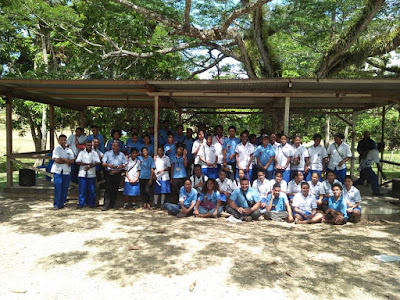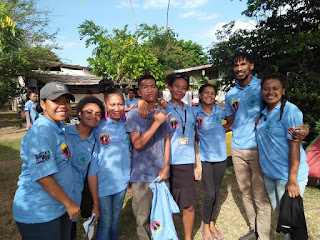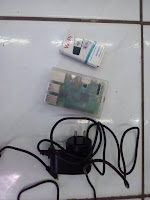Here is a list of accommodation rates for those traveling to Madang (town vicinity) for leisure, attending a school event like graduation or any other business. This list is not exhaustive and is a work in progress meaning updated information will be put up as soon as they become available. This information is correct as of 28/08/2018.
You may also click here to view the entire file in Google sheet.
Either click on the link above or copy and paste the text below into a browser.
(https://docs.google.com/spreadsheets/d/1YWT2maxBKYl2qI-miNHJVFDUbGPCNsT8H0YLLmtMovs/edit?usp=sharing)
Disclaimer: I put this info here with no obligation whatsoever to the respective business. Infor is put here for public benefit, however prices are subject to change.
Drop me a comment if you have noticed a change in prices for any of this accommodation.
Tuesday 8 January 2019
Friday 4 January 2019
RACHEL-Pi custom build project
In draft | Still working on it.
Central
Students Community Awareness to Kupiano Secondary School: RACHEL trial
From the 14 to 15
November, the Central Students Association of DWU conducted a community
awareness project at Kupiano Secondary School. Approximately 180km away from
Port Moresby taking around 4-5 hours’ drive, the school is just within the
vicinity of the Kupiano station in the Rigo-Abau district of Central Province.
The objective was to
disseminate information about DWU and other tertiary institutions in Madang
Province. Give talks on social issues our communities face and how these issues
could be addressed. Furthermore, they planned as part of this community
awareness to give something to the school. The idea was to begin with Kupiano
this year 2018, and then do the same for other secondary schools around Central
province.
The main problem however
was funding to carry out this project. Despite a proposal and letter seeking
funding from the Central provincial government, no funding was forthcoming. The
students organized themselves and started to raise funds with the support from
staff, students and families within DWU and the Madang community. This
presented an opportunity for RACHEL to be trialed. In fact, RACHEL came about
as an option because there wasn’t enough donated books received. The students
than planned to introduce RACHEL and then give the few donated reading books to
add to their existing library.
The next challenge was
choosing the RACHEL server. For this project, we decided to trial the
RACHEL-Pi. Funding was our biggest drawback so we had to choose between two
options; purchasing the pre-built device from the WorldPossible online store or
purchase the raspberry pi device online with accessories and do a custom-build.
We chose the latter as it was an inexpensive option. This was going to be a
pilot project.
What
equipment/software is contained in this custom-built Rachel Pi server?
We decided to custom
build the RACHEL-Pi (as it was an inexpensive option) using the following
components.
Item
|
Qty
|
Cost
|
Raspberry Pi 3 Model B+ Rev 1.1
5v power adapter included.
|
1
|
K120.00 (A$48.99) Bought here
on Ebay
|
Wi-Pi USB Wireless adapter
|
1
|
K40.00 (A$19.95)
|
64GB Micro-SD Card
|
1
|
K155.00 Bought at the local shop (Papindo)
|
Raspberry Pi clear case
|
1
|
K20.00 ($7.99)
|
58GB of educational resources[1]
|
N/A
|
Free
|
[1] Downloaded
from here (http://rachelfriends.org/downloads/public_ftp/rachelpi_64EN/)
with the help of DWU ICT. (Staff and students have download limits thus we
asked ICT to help us).
 |
  |
Figure
4. The
custom-built RACHEL-Pi components: Raspberry Pi 3 B+ with the Wi-Pi, 5v power
adapter and 64GB microSD card.
|
|
Raspberry Pi hardware specifications: Raspberry Pi 3
B+: 1.4GHz 64-bit quad-core processor, dual-band w/LAN, Bluetooth 4.2/BLE,
FastEthernet, PoE support (with separate PoE HAT)
The cost of purchasing
the pre-built RACHEL-Pi is $169.00 (USD) which when converted to PGK amounts to
K550.77 plus shipping totaled to around K800.
With our custom build
RACHEL-Pi, it only cost less than K500 for this device with the accessories.
The opportunity cost to this option is that given the limited processing power
of the raspberry pi (to act as a server) used it has the capacity to allow at
least between ten (10) to fifteen users to connect to it at any single time
with either their own smartphone, tablet or laptop so. More users than this
would result in slower response time from the device. Steps showing how to
write the RACHEL-Pi image to the microSD card are in Appendix 1.
This is an inexpensive
option if compared to the cost of purchasing at least ten secondhand desktop
computers with monitor, mouse and keyboard. It is energy efficient and cost
effective. An alternative and future plan is to purchase the RACHEL-Plus for
the next school project.
Subscribe to:
Posts (Atom)









